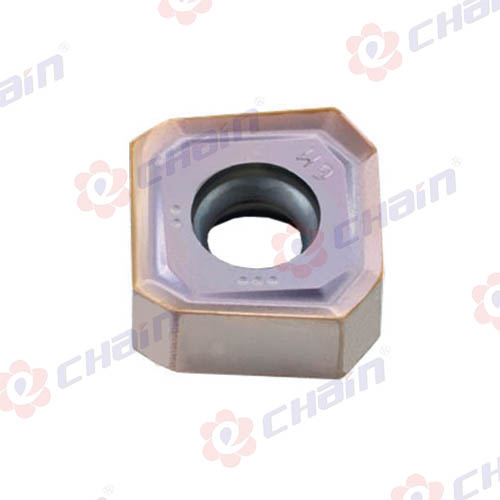What are the typical coatings applied to milling inserts
2023-10-26
Coatings applied to milling inserts serve to enhance their performance by improving wear resistance, reducing friction, and preventing built-up edge (BUE) formation. The choice of coating depends on the specific machining application and the material being cut. Some of the typical coatings applied to milling inserts include:
1. TiN (Titanium Nitride): TiN coatings are one of the most common and versatile coatings for milling inserts. They offer excellent wear resistance and reduce friction, making them suitable for a wide range of materials, including steels, stainless steels, and non-ferrous metals.
2. TiCN (Titanium CarboNitride): TiCN coatings provide better wear resistance than TiN and are especially effective in high-temperature applications. They are often used for machining harder materials like cast iron, alloy steels, and some stainless steels.
3. TiAlN (Titanium Aluminum Nitride): TiAlN coatings are known for their superior performance in high-heat and high-speed machining applications. They are suitable for materials like heat-resistant superalloys, titanium, and hardened steels.
4. AlTiN (Aluminum Titanium Nitride): AlTiN coatings offer excellent wear resistance and can withstand extreme temperatures. They are commonly used for hard materials like tool steels, hardened steels, and nickel-based alloys.
5. CrN (Chromium Nitride): CrN coatings provide high-temperature resistance and are often used in applications involving heat-resistant materials, as well as aluminum and non-ferrous alloys.
6. DLC (Diamond-Like Carbon): DLC coatings offer low friction and excellent wear resistance, making them suitable for cutting non-ferrous materials, plastics, and composites. They can also reduce built-up edge formation.
7. CVD (Chemical Vapor Deposition) Diamond: CVD diamond coatings are extremely hard and wear-resistant. They are used in applications requiring the highest level of wear resistance, such as machining highly abrasive materials and non-ferrous metals.
8. PVD (Physical Vapor Deposition) Diamond: PVD diamond coatings are another option for achieving high wear resistance, especially in applications where CVD diamond is not available. They are also used for non-ferrous metals and composites.
9. AICrN (Aluminum Chromium Nitride): AICrN coatings offer good wear resistance and heat resistance, making them suitable for a range of materials, including cast iron, stainless steel, and heat-resistant alloys.
10. ZrN (Zirconium Nitride): ZrN coatings are used for machining high-temperature materials and are known for their ability to handle elevated cutting speeds.
11. Black Oxide: Black oxide coatings are applied to milling inserts to provide lubricity and corrosion resistance. They are more commonly used in general-purpose milling applications.
The choice of coating depends on factors like workpiece material, cutting speeds, feed rates, and the specific machining application. Different coatings are designed to optimize performance in particular scenarios, and selecting the right one can significantly extend tool life and improve overall machining efficiency.



